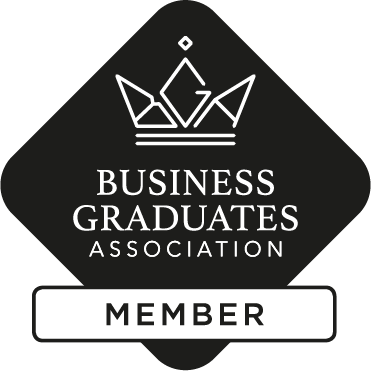University certificate
Scientific endorser

The world's largest faculty of information technology”
Introduction to the Program
This will be a fundamental experience for your professional development as an IT expert"

In this Professional master’s degree, students will learn, from an online mode, to manage and monitor a technological project, either in an international company or in their own consultancy. Nowadays, this type of work is in great demand due to the importance of these jobs in any sector. Therefore, the student will have the opportunity to start with introductory classes on the design and management of these projects, reviewing in detail the role of the manager and the organizational structure. Then, they will learn how to estimate the scope and time management, starting with a baseline and ending with the definition of the activities to be performed.
Carrying out a technology project not only requires managing the work and evaluating the activities to be performed. It is also necessary to prepare a budget to help assess the costs of its elaboration. For this purpose, the student will have an exclusive module on this topic, which will provide them with the tools and techniques for budget planning, and then provide useful information on the preparation and presentation of the final budget.
On the other hand, no project can be complete until a risk assessment is performed. Therefore, the student will be able to learn, through this program, the basic concepts such as severity, attitudes towards risk, individual risk, among others. In addition, the student will learn to perform an assessment of unrelated hazards, as well as a qualitative and quantitative analysis that will serve to develop a timely response to any adverse situation that may arise.
After completing the Professional master’s degree, students and graduates of computer science or any other degree will be able to efficiently execute and carry out any technological project that requires their expertise. You will also develop your project management and administration skills, which will benefit your professional profile for working with international employers.
Take on new responsibilities and estimate the timing of every design and technology development you participate in"
This Professional master’s degree in Technological Projects Management contains the most complete and up-to-date program on the market. Its most important features are:
- The development of case studies presented by experts in Technology Project Management
- The graphic, schematic and practical contents of the system provide business and practical information on those disciplines that are essential for professional practice
- Practical exercises where the self-assessment process can be carried out to improve learning
- Its special emphasis on innovative methodologies
- Theoretical lessons, questions to the expert, debate forums on controversial topics, and individual reflection assignments
- Content that is accessible from any fixed or portable device with an Internet connection
Acquire new skills to solve the technical problems of your project, elaborating a risk plan"
The program’s teaching staff includes professionals from the sector who contribute their work experience to this training program, as well as renowned specialists from leading societies and prestigious universities.
The multimedia content, developed with the latest educational technology, will provide the professional with situated and contextual learning, i.e., a simulated environment that will provide immersive training programmed to train in real situations.
This program is designed around Problem-Based Learning, whereby the professional must try to solve the different professional practice situations that arise during the academic year. For this purpose, the student will be assisted by an innovative interactive video system created by renowned and experienced experts.
Take your knowledge further and learn how to manage the budget of a technology project"

Companies are looking for your talent. Develop it thanks to this TECH Global University program"
Why study at TECH?
TECH is the world’s largest online university. With an impressive catalog of more than 14,000 university programs available in 11 languages, it is positioned as a leader in employability, with a 99% job placement rate. In addition, it relies on an enormous faculty of more than 6,000 professors of the highest international renown.

Study at the world's largest online university and guarantee your professional success. The future starts at TECH”
The world’s best online university according to FORBES
The prestigious Forbes magazine, specialized in business and finance, has highlighted TECH as “the world's best online university” This is what they have recently stated in an article in their digital edition in which they echo the success story of this institution, “thanks to the academic offer it provides, the selection of its teaching staff, and an innovative learning method aimed at educating the professionals of the future”
A revolutionary study method, a cutting-edge faculty and a practical focus: the key to TECH's success.
The most complete study plans on the university scene
TECH offers the most complete study plans on the university scene, with syllabuses that cover fundamental concepts and, at the same time, the main scientific advances in their specific scientific areas. In addition, these programs are continuously being updated to guarantee students the academic vanguard and the most in-demand professional skills. In this way, the university's qualifications provide its graduates with a significant advantage to propel their careers to success.
TECH offers the most comprehensive and intensive study plans on the current university scene.
A world-class teaching staff
TECH's teaching staff is made up of more than 6,000 professors with the highest international recognition. Professors, researchers and top executives of multinational companies, including Isaiah Covington, performance coach of the Boston Celtics; Magda Romanska, principal investigator at Harvard MetaLAB; Ignacio Wistumba, chairman of the department of translational molecular pathology at MD Anderson Cancer Center; and D.W. Pine, creative director of TIME magazine, among others.
Internationally renowned experts, specialized in different branches of Health, Technology, Communication and Business, form part of the TECH faculty.
A unique learning method
TECH is the first university to use Relearning in all its programs. It is the best online learning methodology, accredited with international teaching quality certifications, provided by prestigious educational agencies. In addition, this disruptive educational model is complemented with the “Case Method”, thereby setting up a unique online teaching strategy. Innovative teaching resources are also implemented, including detailed videos, infographics and interactive summaries.
TECH combines Relearning and the Case Method in all its university programs to guarantee excellent theoretical and practical learning, studying whenever and wherever you want.
The world's largest online university
TECH is the world’s largest online university. We are the largest educational institution, with the best and widest online educational catalog, one hundred percent online and covering the vast majority of areas of knowledge. We offer a large selection of our own degrees and accredited online undergraduate and postgraduate degrees. In total, more than 14,000 university degrees, in eleven different languages, make us the largest educational largest in the world.
TECH has the world's most extensive catalog of academic and official programs, available in more than 11 languages.
Google Premier Partner
The American technology giant has awarded TECH the Google Google Premier Partner badge. This award, which is only available to 3% of the world's companies, highlights the efficient, flexible and tailored experience that this university provides to students. The recognition as a Google Premier Partner not only accredits the maximum rigor, performance and investment in TECH's digital infrastructures, but also places this university as one of the world's leading technology companies.
Google has positioned TECH in the top 3% of the world's most important technology companies by awarding it its Google Premier Partner badge.
The official online university of the NBA
TECH is the official online university of the NBA. Thanks to our agreement with the biggest league in basketball, we offer our students exclusive university programs, as well as a wide variety of educational resources focused on the business of the league and other areas of the sports industry. Each program is made up of a uniquely designed syllabus and features exceptional guest hosts: professionals with a distinguished sports background who will offer their expertise on the most relevant topics.
TECH has been selected by the NBA, the world's top basketball league, as its official online university.
The top-rated university by its students
Students have positioned TECH as the world's top-rated university on the main review websites, with a highest rating of 4.9 out of 5, obtained from more than 1,000 reviews. These results consolidate TECH as the benchmark university institution at an international level, reflecting the excellence and positive impact of its educational model.” reflecting the excellence and positive impact of its educational model.”
TECH is the world’s top-rated university by its students.
Leaders in employability
TECH has managed to become the leading university in employability. 99% of its students obtain jobs in the academic field they have studied, within one year of completing any of the university's programs. A similar number achieve immediate career enhancement. All this thanks to a study methodology that bases its effectiveness on the acquisition of practical skills, which are absolutely necessary for professional development.
99% of TECH graduates find a job within a year of completing their studies.
Postgraduate Certificate in Basic Principles for the Management of a Technology Project
.
At TECH Global University, we present our exclusive Postgraduate Certificate in Basic Principles for the Management of a Technology Project, an unmissable opportunity to acquire the fundamental knowledge and become an outstanding leader in the management of technological projects. Our program offers you the convenience and flexibility of online classes, which means you can study from anywhere and at any time that best suits your schedule. Online classes eliminate geographical barriers and allow you to access the quality education we offer at TECH Global University no matter where you are. In addition, you will enjoy multiple benefits, such as access to up-to-date study materials, real-time interaction with expert professors and classmates, and the ability to review class content as many times as you wish for optimal learning.
Master the skills to manage technology projects from the comfort of your home
.
In our Postgraduate Certificate in Basic Principles for the Management of a Technology Project, you'll dive into the essential fundamentals of project management. You'll learn the best practices and methodologies used in the industry to successfully plan, execute and oversee technology projects. Our highly trained instructors will guide you in developing key skills, such as identifying objectives, efficient resource allocation, risk management and effective communication in a technology environment. TECH Global University stands out for its academic excellence and practical approach. Our faculty is composed of professionals with extensive experience in the management of technological projects, who will provide you with a relevant and updated education. In addition, you will have the support and personalized guidance of our professors throughout your academic career. Don't miss the opportunity to acquire the necessary skills to lead technological projects with confidence and success. Join the Postgraduate Certificate in Basic Principles for the Management of a Technology Project at TECH Global University and take your career to the next level.
.







